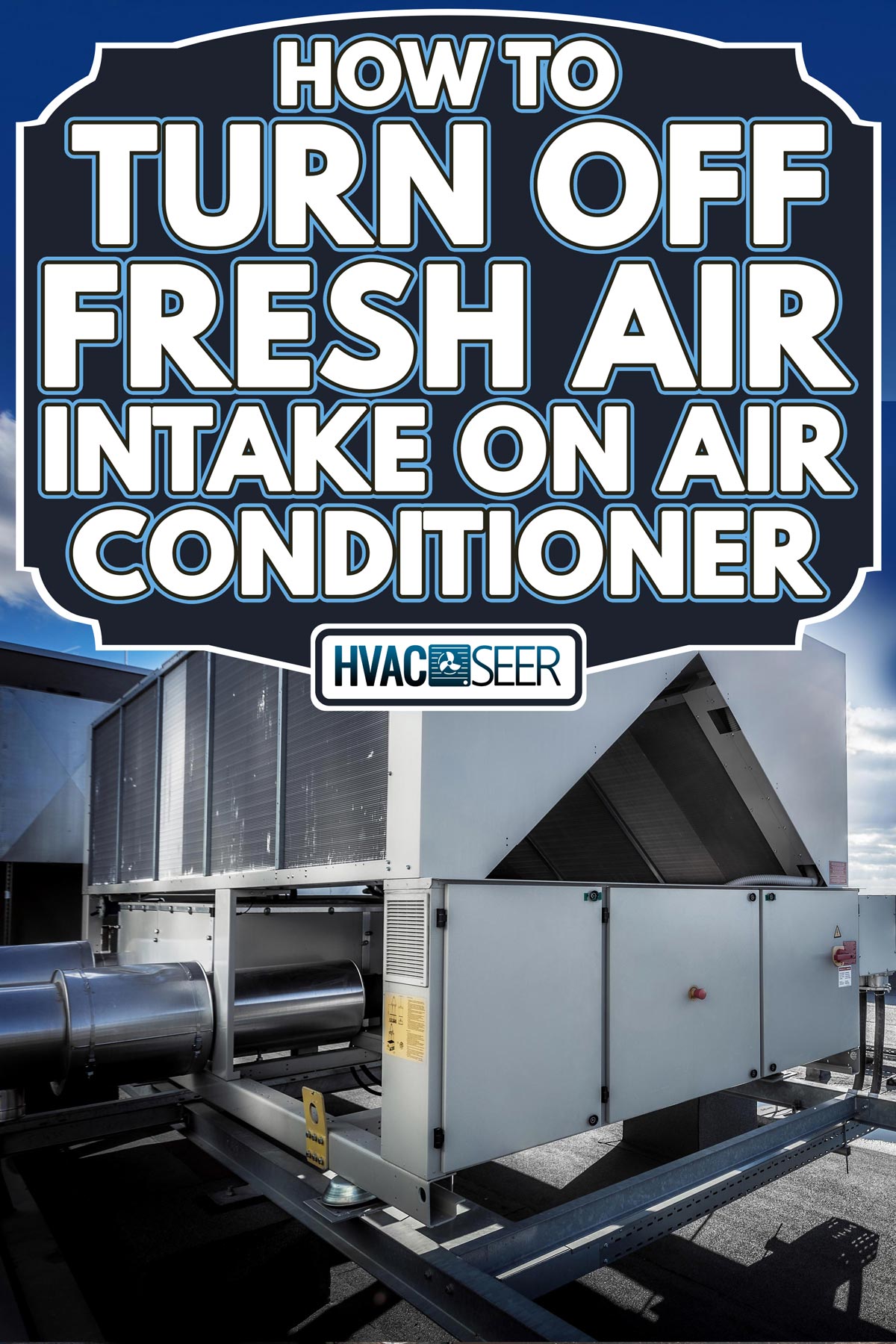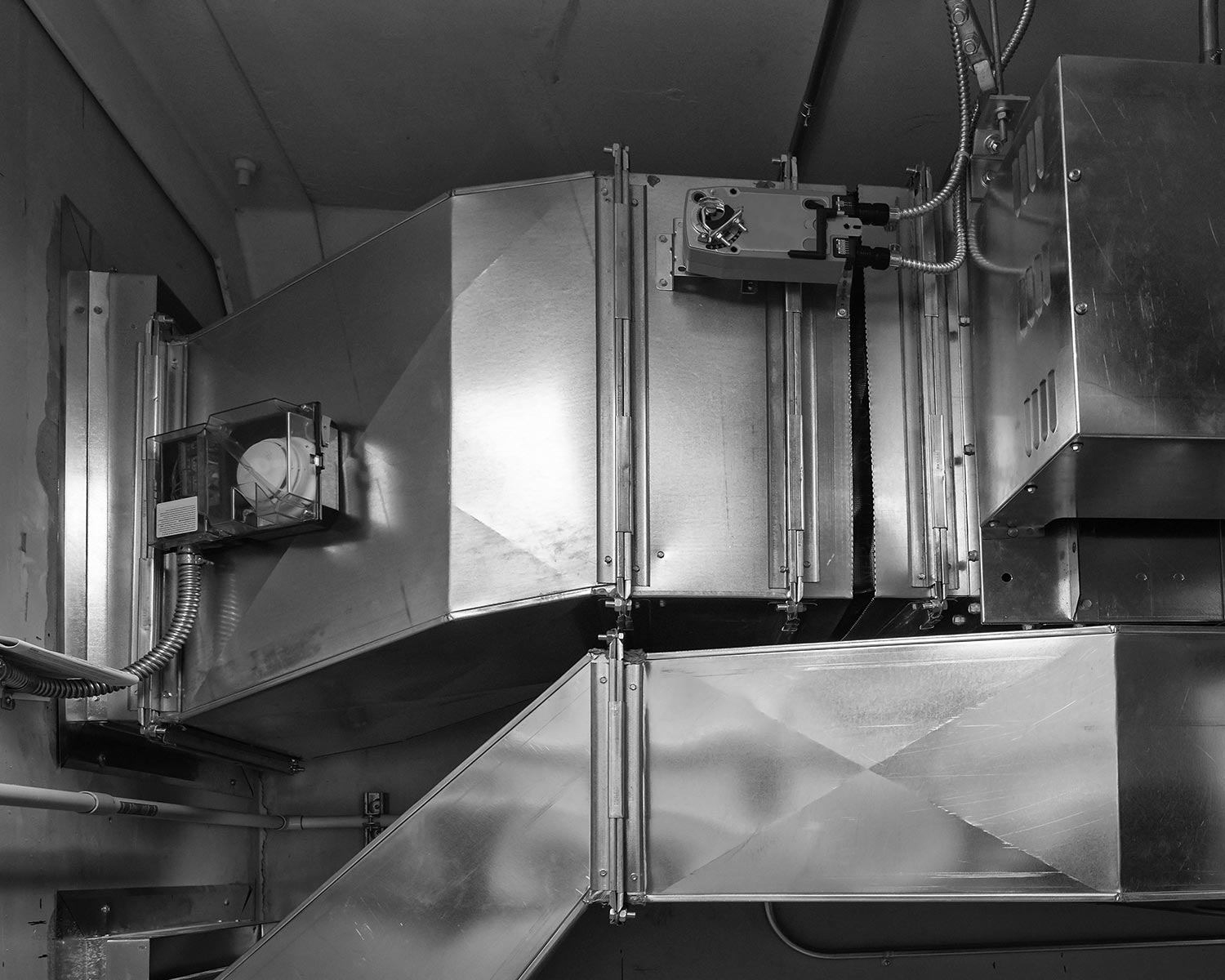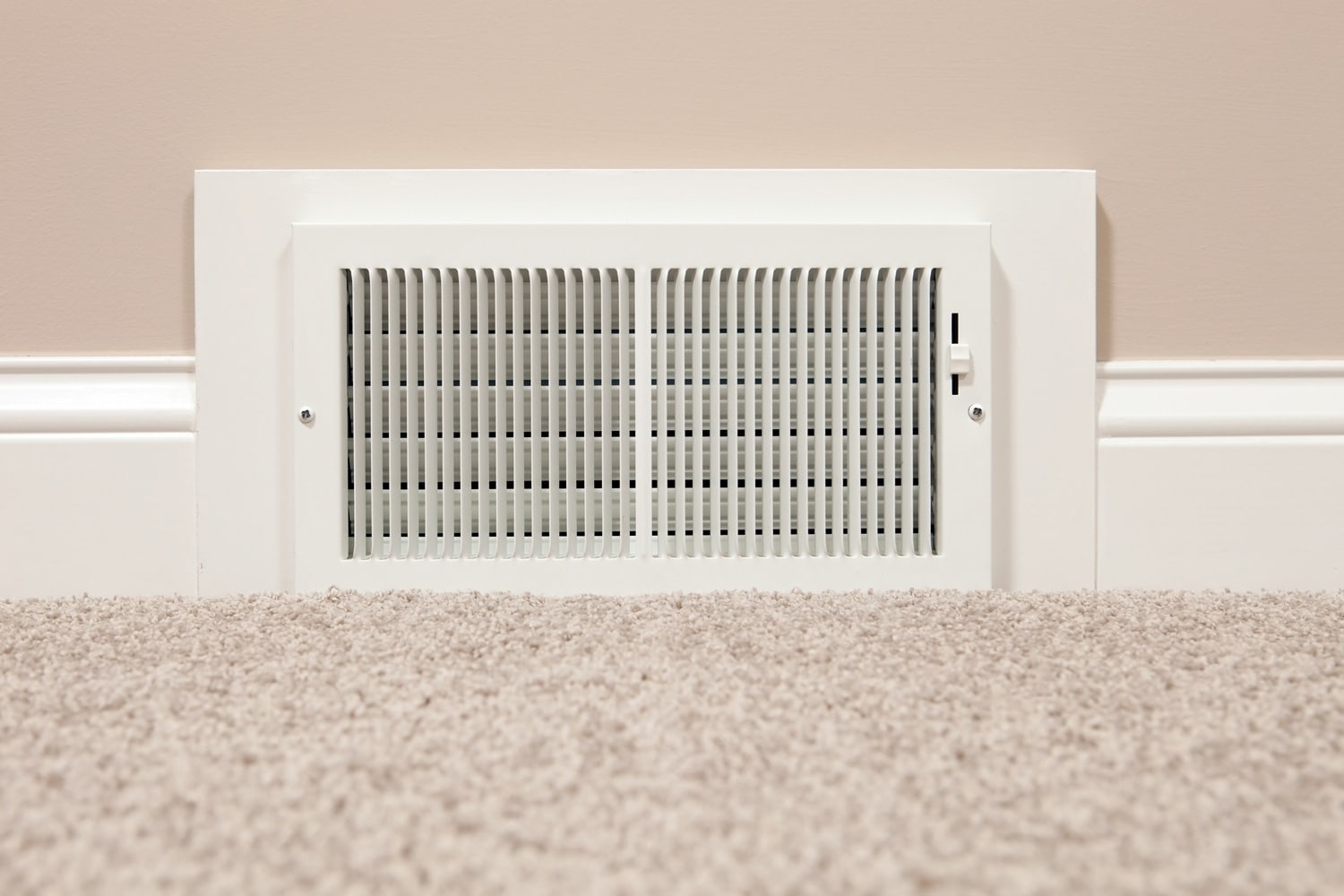Fresh air intake improves the function of your AC unit because it helps keep the unit from overheating and reduces energy usage. Air conditioners are designed to remove heat and humidity from a room, so air circulation is important. If for any reason, you would like to turn off your AC's fresh intake, we have consulted HVAC experts to advise you on how to do it correctly.
Fresh air intake flows through the damper of the AC. It is usually fixed in the room's attic during installation, and it comes with a cover.
To turn off fresh air, simply slide the dampers cover over the opening. Avoid using random materials like clothes, rags, or curtains to block the damper, as this might cause damage to the system.
Opening your damper is essential for the proper functioning of your AC. Read on as we would explain how to safely close them when you need to. We would also talk about air intake vents and how to operate them.

How Does Your Air Conditioner Recieve Fresh Air?
Air conditioners take in fresh air from the outside and cool it before circulating it into the room. The air is taken in through openings on the back of the unit or through a duct that connects to a vent on the wall or ceiling of your home.

Air passes over coils filled with refrigerant, which cools down and removes heat from the air by absorbing it into its liquid form. This cooled, dehumidified air is released into your home via a vent on your floor or through an opening on your wall or ceiling.
Note that there are different air conditioners, and the air intake depends on the brand and type installed in your home.
Turning Off Fresh Air Intake In Air Conditioner
Air conditioning units are necessary for most homes, but they can be expensive to run. One way to save money on your electric bill is to turn off the air intake when it is not needed.
The air conditioner needs a steady cool airflow for the air conditioner to work effectively. When you are not using the AC, turning off the intake will help you save money and reduce your carbon footprint.
If you have a window AC unit or an indoor unit that vents through a wall or ceiling, you can turn off the intake by closing the air conditioner damper. This can be done by sliding the damper's lid of the intake vent shot or turning it off.
Check the manual of your AC for the specific guide on how to turn off the fresh intake of air. The instructions might differ based on the manufacturer, but the above procedure works generally.
What is Air Conditioner Damper?

To properly turn off fresh air intake in your AC, you need to understand what a damper is and its functions. An air conditioner damper is a device used to regulate the flow of outside air into a building.
It is used in conjunction with an HVAC system. It is usually installed near the outdoor unit and can either be open or closed, depending on the needs of the building.
The damper can be controlled by a manual adjustment or an automated control system, like an HVAC control panel. Depending on the need, the damper will typically have a spring-loaded mechanism that can be adjusted to allow more or less airflow into the building.
The damper has two parts, a blade, and a frame. The blade moves in and out of the frame to control the amount of air that enters.
Types of AC Dampers
1. Control Dampers
Control dampers are the most common type of damper. It can fully close or open its blades and is typically used in air conditioning and boiler systems to regulate airflow and pressure. This device controls the flow by controlling the size of its blades.
2. Blade Dampers
The blade damper is a component in an air conditioning system that regulates airflow by using a series of blades to interrupt the airflow. The blade damper is designed to reduce the noise and vibration caused by high-speed airflow.
Blade dampers don't always effectively control airflow because they don't change their position as quickly as other dampers. For blade dampers to work properly, there needs to be enough space for them inside the duct so that the blades can move freely.
3. Balancing Dampers
Balancing dampers are installed in the ductwork of an HVAC system. The function of a balancing damper is to regulate the amount of hot and cold air that goes into a room. This device is used in heating, ventilation, and air-conditioning systems. Balancing dampers are also called balance valves or actuators.
The principle of balancing damper is that an opening in the damper allows outside air to enter the system and be shut off when it’s not needed.
The valve opens whenever there is a pressure difference inside and outside the building, increasing supply airflow. The damper should always be positioned so that it does not restrict any flow for other rooms or zones which may require more air than others.
What are Air Conditioner Vents?

Air conditioner vents are the openings in the wall or window that allow outside air to contact the coolant coils inside an air conditioner. Air conditioners are designed to remove heat from a room or building by drawing in cool outside air and blowing it over these coils, which cools down and dehumidifies the air.
Air vents are also crucial for the quality of air in your home. They help filter out debris and preserve air quality. This is especially important if you have pets and children with allergies.
Air conditioning is one of the most expensive utilities you need to pay for, especially if you live in a hot area. One way to reduce the cost is by making sure that there is proper air circulation.
Air vents let the air in and out of your house, but they also help regulate how much energy your air conditioner uses and how much money you spend on your electricity bill each month.
Should AC Vents Always Be Open or Closed?
AC vents are designed to distribute cold air through the room evenly. This is done by blowing air out of the vents on the floor and ceiling. When you close the vents, this will cause a buildup of cool air in one area, which will result in uneven airflow and uncomfortable temperatures. Closing your AC vents can also damage your system.
When there is less amount of air being supplied to cold coils in your AC, it causes changes to the temperature. This can affect the compressor, costing almost $3000 to replace without a warranty.
Should You Close Your AC Vents or Damper to Prevent Fresh Air Intake?
From explaining the different functions of AC and damper, you might be wondering if you should close the AC vents or damper to prevent fresh air intake. How is closing one different from closing the other?
You automatically force your air conditioner to redirect air to another area when you close a damper. The damper is a closer source of air than the intake vent.
When Should You Close Your Damper or AC Vents?
During a WildFire

Air conditioners are a great way to keep your home cool and comfortable during the summer. But when there is a wildfire or fire incident around you, you may need to close your AC's air intake.
The air intake of your air conditioner is usually located on the outside of your house. In case of fires, there's a chance that the smoke and particles from the fire can enter your house through the air intake.
To prevent this from happening, it's important to keep your windows and doors closed during a wildfire. You should also close off any other openings or vents in your house that might allow smoke and other particles to enter. If you have an air conditioner, make sure you close the damper to avoid the circulation of toxic air inside your home.
Release of Air Pollutants
It is essential to take precautions when there are high levels of radioactive air or toxic fumes in the air. It would be best to close your windows, turn off the ventilation system, and intake fresh air from your air conditioner.
In Conclusion
Air conditioners need a constant supply of fresh air intake to function properly. If there is not enough fresh air intake, it pulls in hot outdoor air. Your AC’s vent and damper need to be open to allow fresh air intake.
But in cases of wildfire or pollution, you can safely close them following the discussed tips. If you liked reading this article, you might also enjoy reading these other related topics about air conditioners.
Why is Air Coming Out of Vents When AC is Off?
Should The Outside Cooling AC Fan Always Run?
